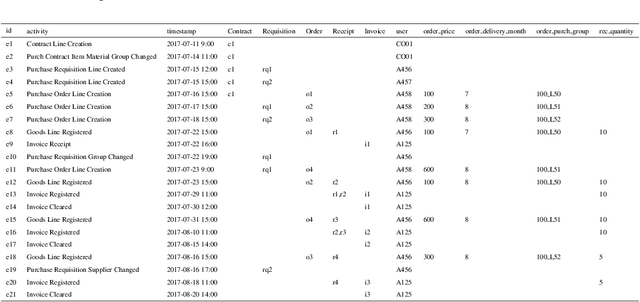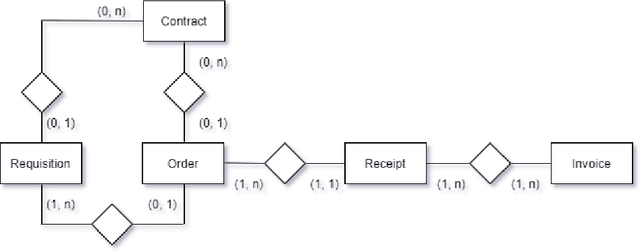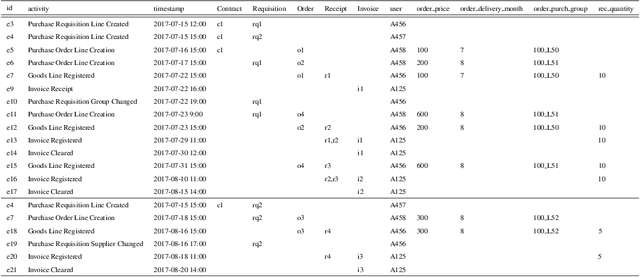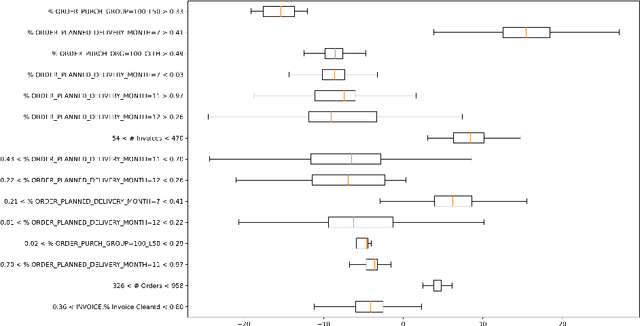Object-centric Process Predictive Analytics
Paper and Code
Mar 05, 2022



Object-centric processes (a.k.a. Artifact-centric processes) are implementations of a paradigm where an instance of one process is not executed in isolation but interacts with other instances of the same or other processes. Interactions take place through bridging events where instances exchange data. Object-centric processes are recently gaining popularity in academia and industry, because their nature is observed in many application scenarios. This poses significant challenges in predictive analytics due to the complex intricacy of the process instances that relate to each other via many-to-many associations. Existing research is unable to directly exploit the benefits of these interactions, thus limiting the prediction quality. This paper proposes an approach to incorporate the information about the object interactions into the predictive models. The approach is assessed on real-life object-centric process event data, using different KPIs. The results are compared with a naive approach that overlooks the object interactions, thus illustrating the benefits of their use on the prediction quality.
 Add to Chrome
Add to Chrome Add to Firefox
Add to Firefox Add to Edge
Add to Edge